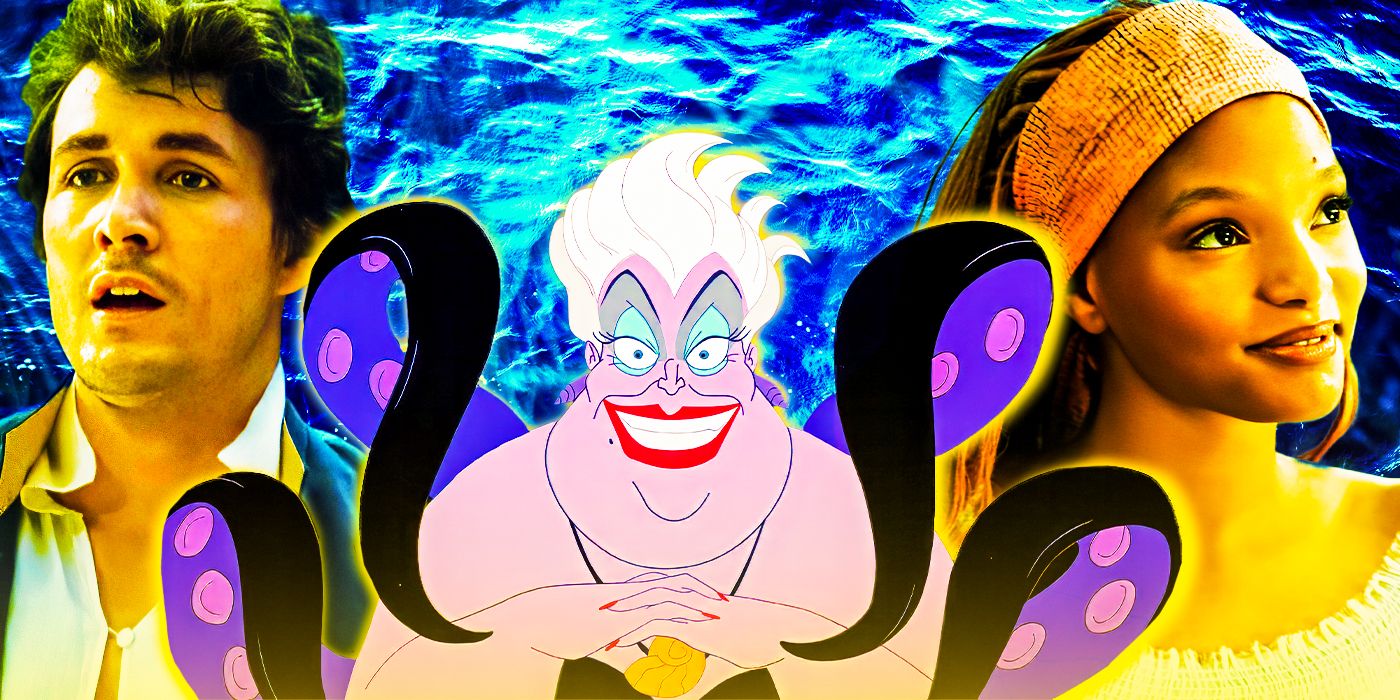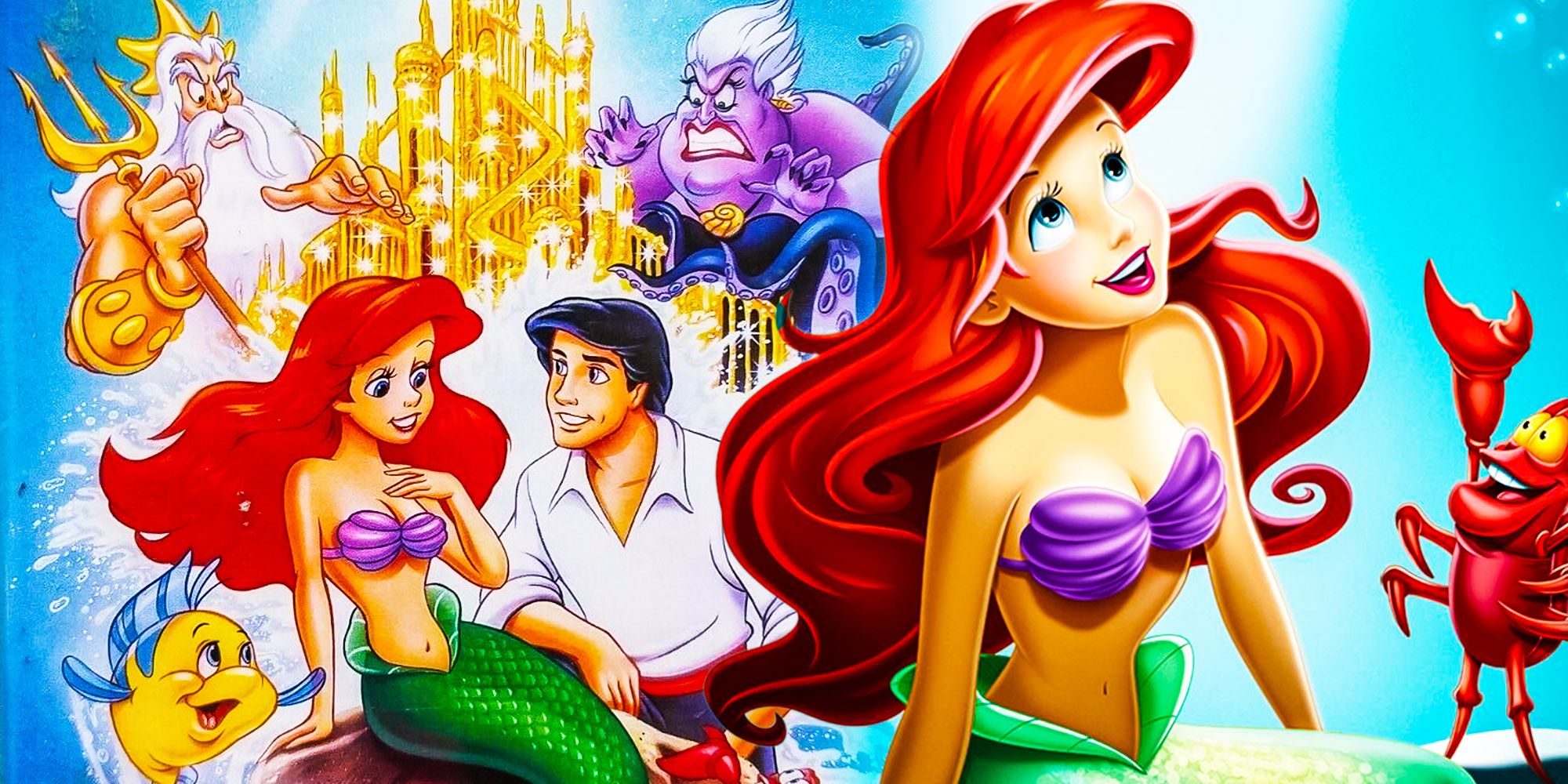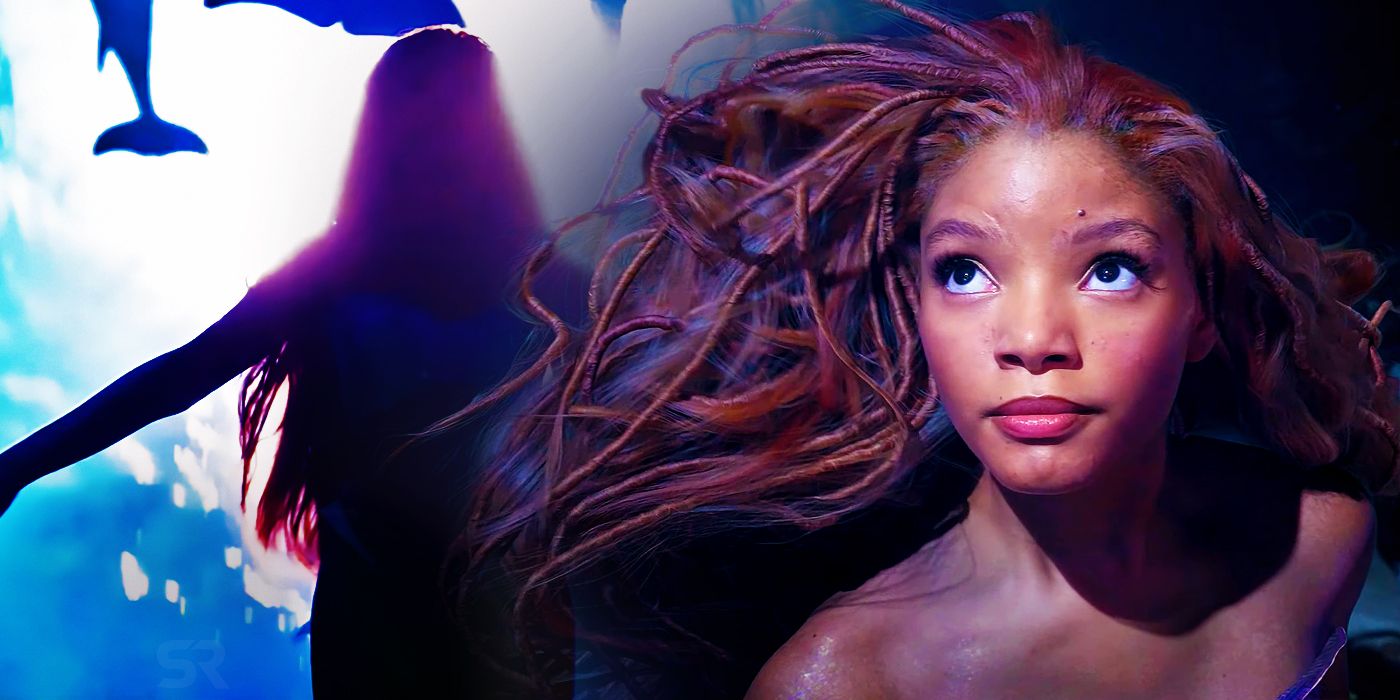Summary
- Hans Christian Andersen's original Little Mermaid story is much darker, featuring painful consequences for the main character's choices.
- In the original tale, mermaids have no souls and must earn one by getting a human to fall in love with them, leading to a tragic ending.
- The sea witch's home in Andersen's story is even more sinister, filled with hybrid creatures and made of human bones, adding to the darkness.
The Little Mermaid is a beloved Disney animated classic, but the original The Little Mermaid story is incredibly dark, and Disney was right to change some of the more horrifying aspects. The Hans Christian Andersen fairy tale is a very grim story, featuring all kinds of gruesome elements that wouldn't fit well into a family-friendly animated film. Disney's version of the tale is now more well-known than Andersen's, with the darker details being stuck in the original story.
The Little Mermaid follows Ariel, a young mermaid princess, as she trades her voice for a chance to travel to land to experience the world of humans. In a time of financial struggle for Disney, The Little Mermaid revitalized the company, kicking off an era of massive hits known as the Disney Renaissance. The movie is still culturally relevant today, with The Little Mermaid getting a live-action remake that introduces a whole new generation to the story (with a few more changes). However, even many of the film's initial viewers don't know about The Little Mermaid story's dark origins.

The Little Mermaid Remake Closed A Major Plot Hole From The Original With Controversial Change
The Little Mermaid remake made a change to Ursula and Ariel's deal that subtly fixed a major plot hole left by the animated version.The Original Little Mermaid Story Is So Much Darker
Ariel's Deal Is Painful & Tortuous
Although the Disney version is pretty lighthearted, the original The Little Mermaid story was so much darker. Like in the movie, Ariel's deal with the sea witch involves giving up her voice for legs. However, there is a catch. As the sea witch explains, every step the little mermaid takes will feel as if she is walking on sharp knives, making her time on land excruciatingly painful.
The mermaid has to repeatedly go to the sea to cool her feet in the water because of the pain she's in throughout the story. When she does that, it's also the only time she is able to see her family from afar since they didn't know until after she made the deal with the sea witch that she would be leaving them. While there are a lot of similarities to Disney's animated and live-action movies, there are slight differences even among the similarities.
Though there are plenty of aquatic creatures in Andersen's tale, they are not friends who speak with the mermaids but are instead treated like pets. That's not unlike how the mermaid is treated by the prince when she ends up on land either. He cares for her and wants to keep her close to him, but unlike the live-action movie where she's treated to her own room, she's given a small bed to sleep just outside his bedroom door as though she's a pet he wants to keep an eye on.
The little mermaid's sisters do make bets with one another about which ships will sink and which men will learn about the sea by drowning in it.
One of the darker aspects of the mermaid myth, and something that is touched on in Andersen's original story is the siren song of mermaids. Andersen doesn't see mermaids luring men to their deaths, but the little mermaid's sisters do make bets with one another about which ships will sink and which men will learn about the sea by drowning in it. That's very dark but something the live-action movie incorporates by giving Ariel the gift of the siren song and having humans be actively concerned about mermaids luring them to their deaths.
The original ending of The Little Mermaid is also dark. So many aspects of the original Hans Christian Anderson story would not have fit into Disney's vision for a family-friendly movie. It's no wonder that certain aspects were hinted at without being fully expanded on in both the animated and live-action versions of The Little Mermaid from Disney.

Why The Little Mermaid's 1989 VHS Cover Was Banned
Disney movies may be family-friendly but the release of The Little Mermaid caused controversy with its suggestive imagery on the VHS cover.Mermaids Have No Souls In The Fairy Tale
It Plays A Part In The Story's Tragic Ending
One of the ways that The Little Mermaid’s original story is dark compared to the Disney adaptation is that Hans Christian Andersen’s original story pays particular attention to the souls and the potential afterlife of the individuals in the story. Death is an ever-looming part of Andersen’s tale, which is why it’s noted that the mermaid herself has no soul.
Creatures like mermaids can only gain a soul if a human being falls in love with them
It's pointed out that only humans have souls. Creatures like mermaids can only gain a soul if a human being falls in love with them, which seems like an unfair point for the mermaid. The titular little mermaid wants to spend her life and afterlife with the human prince that she falls in love with. He, however, doesn’t fall in love with her. Instead, he falls in love with the woman who finds him on the beach after the mermaid saves his life. That woman turns out to be a princess and the one he marries in the original tale.
Without the prince falling in love with her, whom the little mermaid has spent all of her time focusing on and getting to know, there is no other human given the chance to fall in love with her. She spends the story never achieving her dream of getting a soul and having the human advantages of an afterlife away from Earth. Instead, her afterlife involves being a spirit of the air who has to help humans by doing good deeds for a few centuries before she might be granted a soul.

